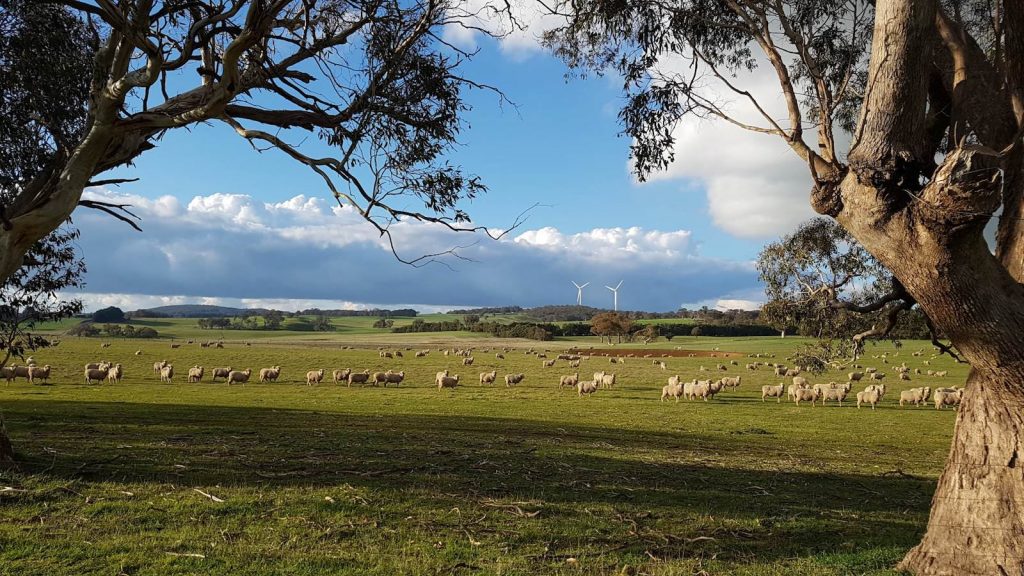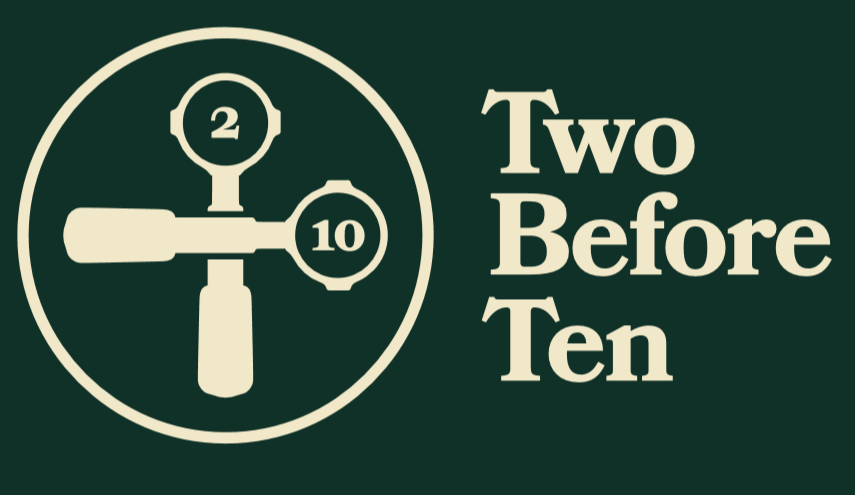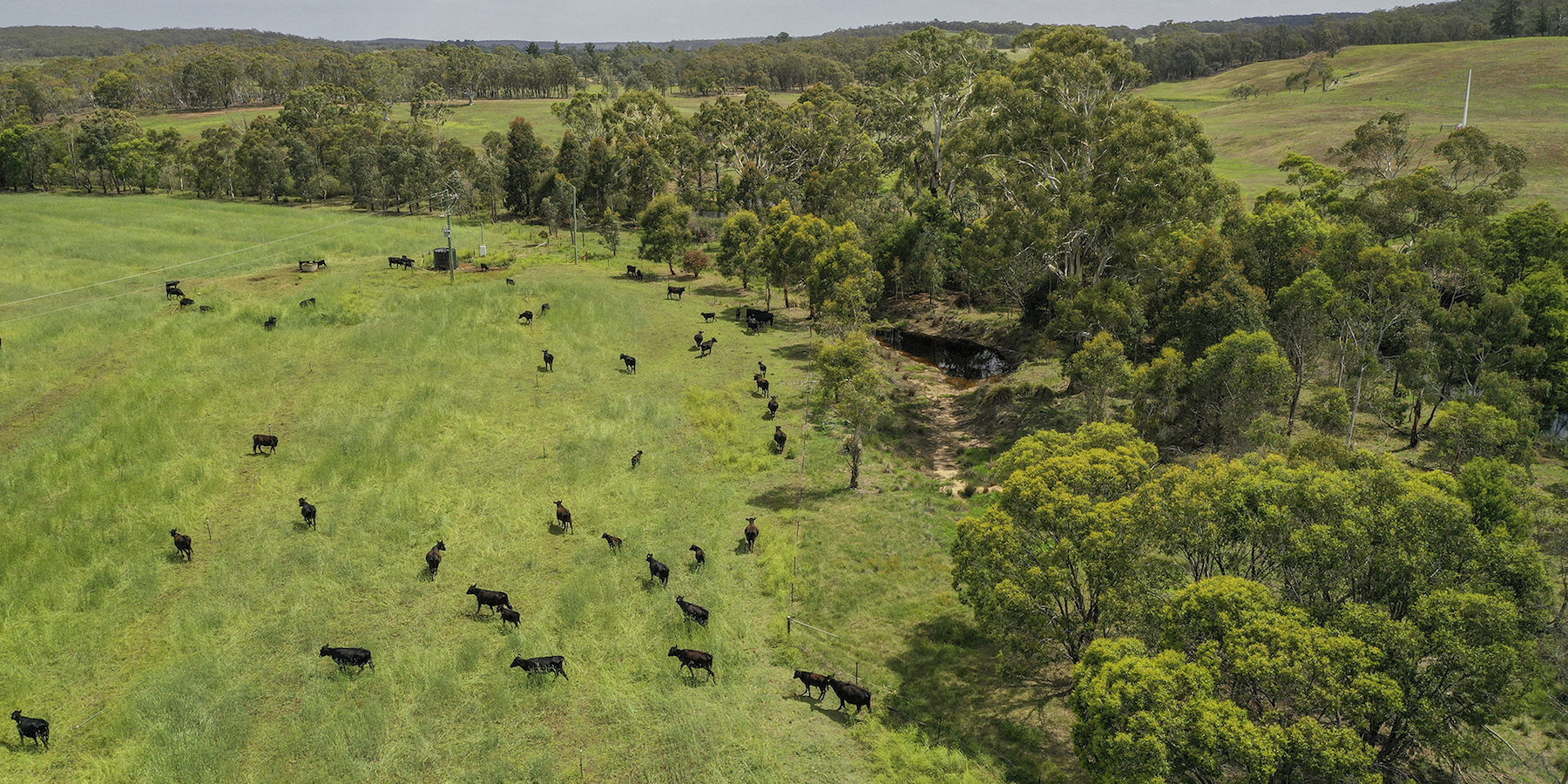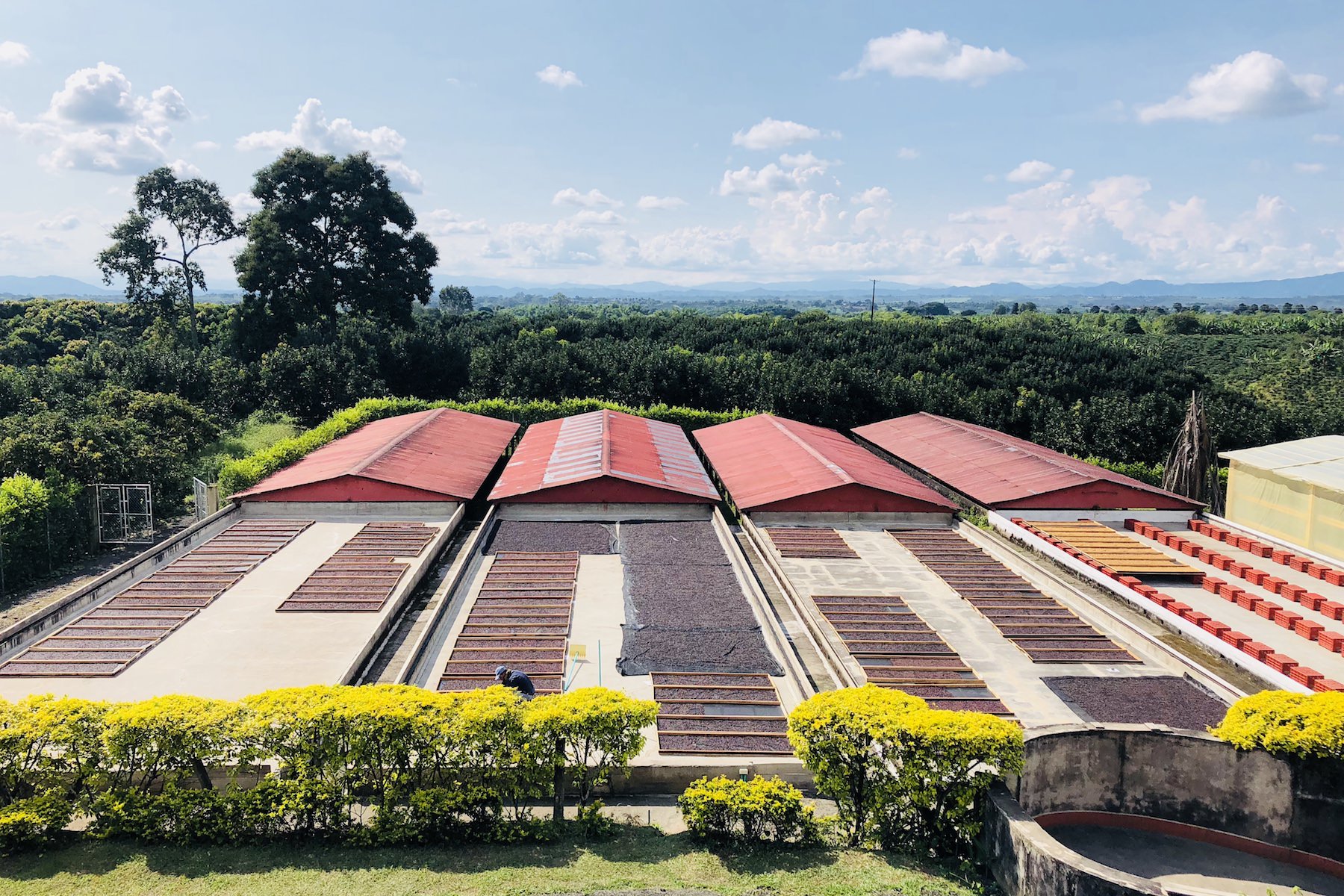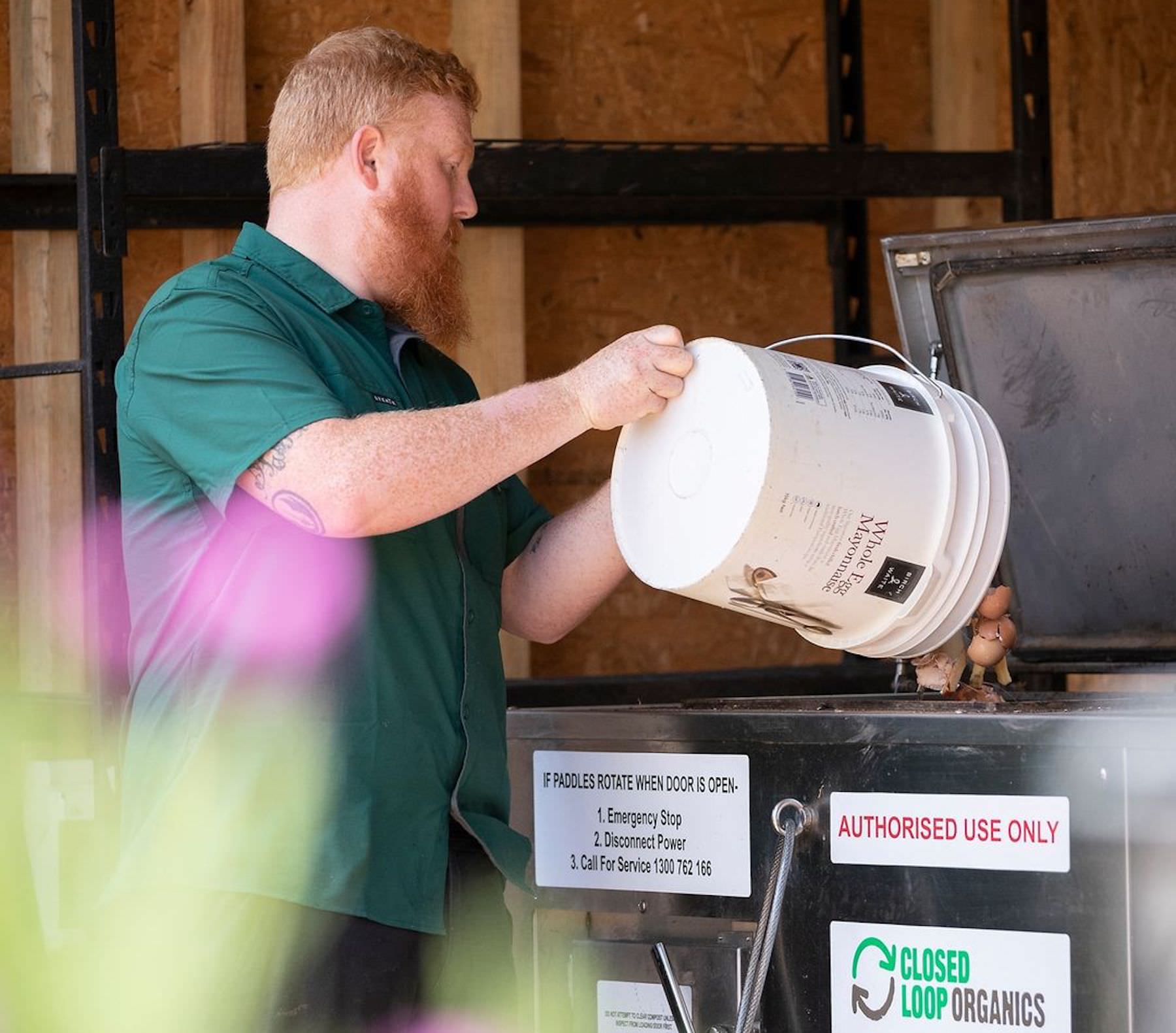Regenerative Agriculture and Livestock Integration on Australian Cattle Farms
The 1100 hectare property north of Yass is barely recognisable since 2004 when Matt Doyle and his wife Maree took over the farm now known as "Glenryan". Their first 2 years plunged the family into drought and financial loss, leading Matt to begin searching for an alternative way to manage and care for the land. His long journey into regenerative agriculture has seen the cattle farm flourish and return record profits, all while improving the health of both livestock and their ecosystem. It's also led him down a path of environmental stewardship in an effort to restore the ecological function of our local landscapes.
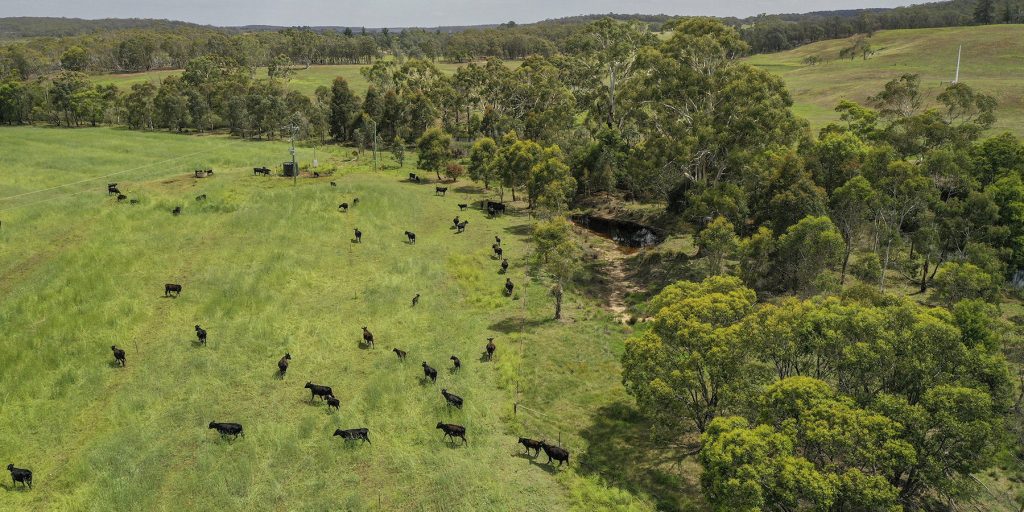
So what is regenerative agriculture and how is it different to industrial farming?
Despite there being no internationally recognised definition, most experts agree that regenerative agriculture has at its core the intention to improve the health of soil or to restore highly degraded soil. Which symbiotically enhances the quality of water, vegetation and land-productivity. Project Drawdown similarly claims that regenerative farming enhances and sustains the health of the soil by restoring its carbon content, which in turn improves productivity—just the opposite of conventional agriculture.
Besides soil health and increased productivity, some measures of a regenerative approach to farming include:
- an increase in biodiversity
- the use of cover crops
- employing time-control grazing techniques
- careful management of livestock and stocking rates
- protection of riparian lands and wildlife corridors
- retaining stubble in the landscape for regrowth
- reducing or eliminating tillage, synthetic pesticides and herbicides
- utilising compost and mulch
Integration of livestock is highly important in regenerative agriculture, with over 40% of practitioners considering this essential for maintaining a balanced system with minimal external inputs. Rather than cattle farmers, some in the grazing industry call themselves grass farmers, and increasingly soil farmers, building their soil's structure and health. This reinforces the idea that if you change your thinking to what's best for the land, your production will follow. Matt Doyle considers his personal transition from high input industrial farming focused on maximum production, to holistic management which aims to restore the ecological function of the landscapes we manage.
The RCA Grazing for Profit school, rural Australia's most attended management school and a key part of Matt's regenerative journey, outlines some of the differences between traditional and holistic livestock agriculture in:
- Carrying capacity - measured in head per hectare versus the capacity of a land area to support grazing animals. The traditional approach doesn't account for different stock sizes, nor the variability of the Australian climate and seasonal conditions.
- Cell grazing - moving larger numbers of stock through smaller pastures more frequently to limit selective grazing utilising animal impact to deliver sunlight and nutrients into the soil, essentially mulching the landscape as they move through.
- Diversity - in plants, animals and microorganisms to increase resilience. Higher diversity = healthier soils.
- An adaptable system - employing proactive changes made based off observations and leading indicators, rather than a rigid system using assumptions or averages.
- Prioritizing health - in ground cover, plants and soils, with a carry on effect through to the nutrition of the grazing animal.
It's a big picture approach that focuses on the wider ecosystem of the land, using observation and proactive measures to keep each part in balance. The end goal is to increase the overall productivity while improving the health of the land for years to come, so what's not to love?

What are the benefits of regenerative farming?
Reduction in greenhouse gas emissions
Sequestering carbon emissions in soils and plant roots is a huge step towards meeting emission reduction targets. Currently agriculture accounts for 33% of land use and 15-25% of greenhouse gas emissions worldwide. The Intergovernmental Panel on Climate Change (IPCC) says that leveraging the mitigation potential in the agriculture sector is extremely important in meeting emission reduction targets. With a widespread transition from industrial to regenerative farming these numbers can be greatly reduced and even reversed, resulting in agricultural land management practices that sequester more emissions than they release.
The Australian Red Meat and Livestock Industry (MLA) is well on its way to meeting its target of net zero emissions by 2030. Since 2005 net greenhouse gas emissions in the industry have fallen 57%, representing by far the greatest reduction by any sector of Australia’s economy. CSIRO has shown it is possible to achieve CN30 while maintaining animal numbers, through continued efforts to avoid greenhouse gas emissions and store carbon in vegetation and soils. Many of the methods used to reach this goal are derived from regenerative agriculture practices combined with advanced technologies in feedstock, genetics and renewable energy sources.
Matt references the popular use of fire as a management tool to try and keep grasslands healthy, often encouraged by environmental authorities across savannah environments globally. Yet well managed livestock can keep these landscapes healthy while emitting far less CO2 and methane emissions. Grazing animals are a natural and essential part of the grassland ecosystem. Without the grazers the condition of the grassland deteriorates.
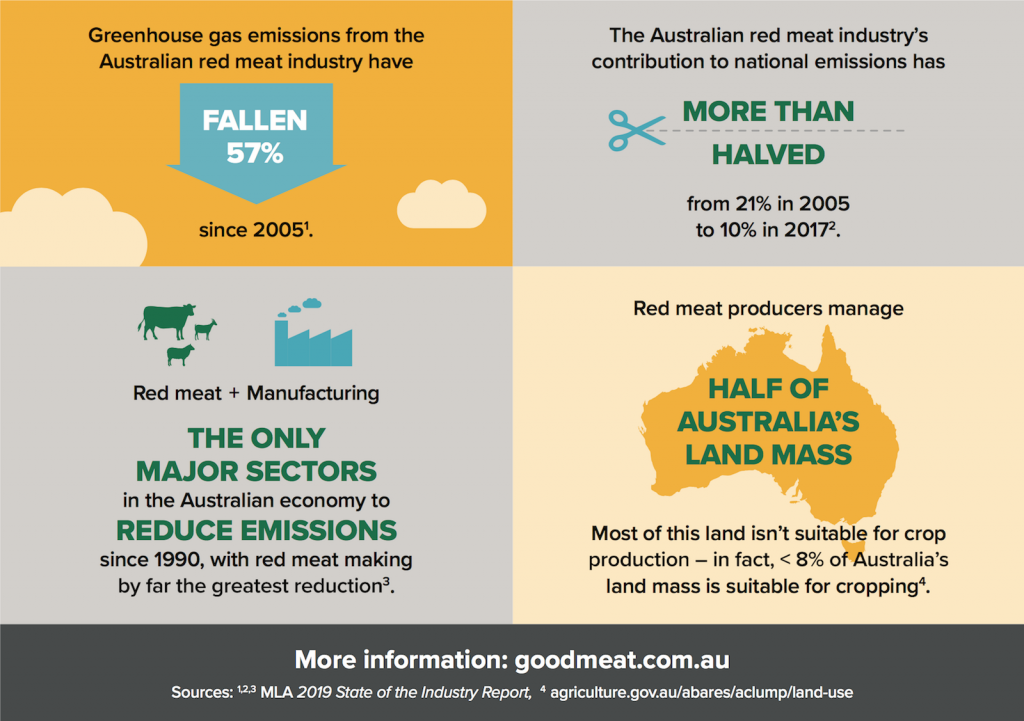
Increased biodiversity for future resilience
As unpredictable weather patterns across Australia continue to worsen with the effects of climate change, it's more important than ever to build resilience into our food systems. Biodiversity plays an important part here, with some plants and organisms flourishing while others suffer in changing conditions. Regenerative agriculture values establishing wildlife corridors. Planting trees and restoration of native plant species is rewarded in multiple ways. They can act as carbon sinks, shade providers, heat reducers, water absorbers, erosion control and even as a varied form of nutrition for supplementing grazing animals. Despite often being considered "weeds" native grasses also have their part to play in the ecosystem, showing up as the first colonisers of degraded soils and contributing organic matter where other plants refuse to grow.
10% of Matt's Glenryan farm has been directly seeded with native trees, around 40,000 of them. The locations for planting were decided after observing the way the water moved down the slope through the farm. They've received payments from Greening Australia to remove this land from the grazing rotation for 5 years whilst the trees get established. Some of these areas have been returned to the grazing rotation with measurable benefits from shelter and shade, as well as increasing the diversity of the diet of their animals.
The benefits of biodiversity can also be seen on the macro scale. The RCS considers maximisation of root mass the primary pathway to building complex soil microbiology. Plant microbiology has a symbiotic relationship to plant roots, where roots supply sugars (energy) in exchange for soil borne minerals and nutrients. The more root bulk the better the soil health.
Cleaner water and better rainfall capture
All life owes its existence to water and rural Australia is notorious for long and harsh droughts. These conditions can mean disaster for farmers who aren't prepared. Matt's family learnt this the hard way and have gone to great lengths to protect their water sources and capture it within the land for future use. They restored around 70 hectares of land containing the headwaters of the Boorowa River, adding riparian shelters where livestock are excluded and nature can dominate. The trees and denser foliage here create wind shelters between paddocks while the roots and shrubs stop topsoil erosion into the river. The natural buffer zones also add improved bushfire resilience, reduction in parasites due to water contamination, increased biodiversity and cleaner water.
As an extra benefit, he claims their riparian shelter adds at least $45,000 to their bottom line each year. “The cattle that spend winter in the sheltered paddocks consistently put on 15-20kg more than the cattle that don’t. If you multiply that by $3 per kg over 1,000 head you can see that it is worth at least $45,000 to us each year.”
Besides the more obvious method of storing rainwater in a series of dams and ponds, water is captured within the soil itself. When heavy rains do come after a long period of drought, in traditional agriculture it typically hits the hard clay and washes away. With deep rooted grasses and healthy soils this water is instead stored within the ground, providing ongoing nourishment for the pastures through irregular rainfall periods. In the 15 years since adopting regenerative practices Matt has seen soil organic matter levels double from 2% to 4% on their farm and thus their soil water holding capacity has increased by 100,000 litres per hectare. So now their rain ‘stays where it falls’.
As chairman of Lachlandcare, protecting local waterways is close to Matt's heart. "One of the biggest problems facing grazing in the tablelands is the amount of silt that is running into the Lachlan and Murrumbidgee Rivers. The silt is from eroded soil that results from poor grazing management."
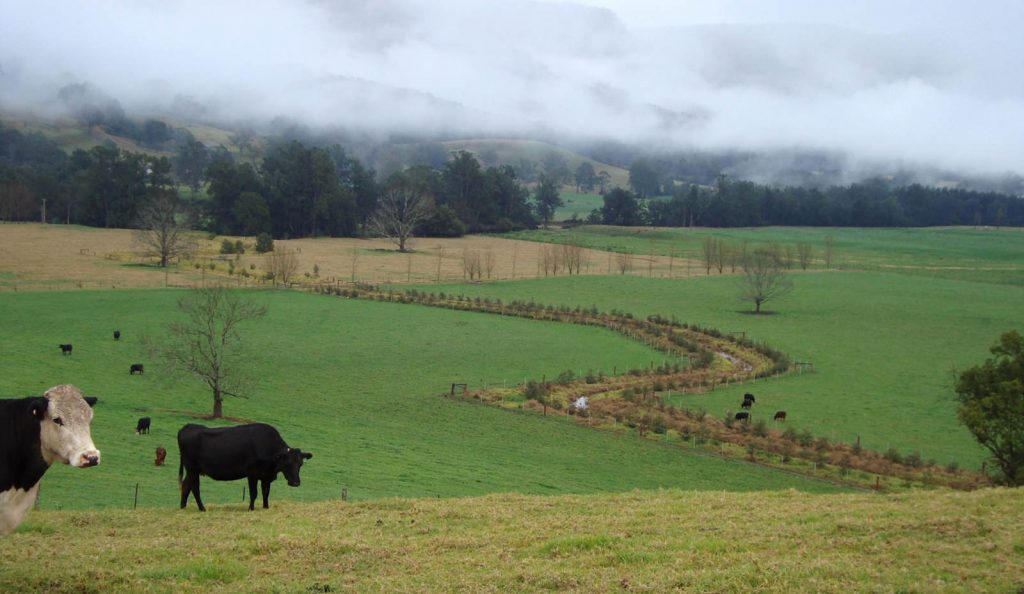
Improvement in health
A healthier ecosystem on farmland also means healthier livestock. The RCS consider ecological health the foundation of their "pyramid of profit". Working to improve the overall health of the land has a carry on effect through plant growth rate and pasture quality, resulting in better nutrition for the animals, higher production and ultimately better profits.
It makes sense that nutrient rich, fresh vegetation leads to higher nutrient density in livestock, as well as healthier and happier livestock who have a variety of foods to choose from. Matt says that allowing their animals a diverse diet in a healthy grassland environment helps them to grow the beef that is healthy for the consumer. A small number of their cows are suitable for the grass fed domestic trade, such as the beef used throughout the Two Before Ten and 10 Yards menus. Matt's family made the decision as regenerative producers to avoid the mainstream of the beef industry which is to produce an animal that requires finishing in a feedlot.
The grass fed product has at least double (and up to five times) the anti-inflammatory Omega 3 fatty acids of the grain fed product. The longer the animal spends being fed grain the higher the ratio of inflammatory Omega 6’s in the diet. The ideal western diet should contain 4:1 O6 to O3 but is more commonly found to be 10:1, so choosing high O3 foods and avoiding high O6 foods is crucial to avoiding the inflammatory diseases of our modern lifestyles. Grass fed beef is loaded with vitamin B12, B3, and B6. It’s rich in highly bioavailable iron, selenium, and zinc as well as high levels of vitamin A and E and other antioxidants. It also contains high quality protein and various lesser-known nutrients, such as creatine and carnosine, which are very important for your muscles and brain.
Higher long-term profits
The goal of RCS's education program is to profitably leave the country in better condition. In 1990 Dr. Terry McCoker OAM developed the regenerative grazing principles, introducing Australian farmers to the concept of ecosystem health and developing methods of measuring it alongside financial health. The two go hand in hand and should be considered of equal importance. The MLA also consider profitability in the livestock industry as paramount to implementing their carbon neutral action plan.
It's true that initial costs of transitioning to regenerative agriculture can be high, but these are typically offset a few years down the line through a combination of:
- higher yields and productivity on the same amount of land
- more nutrient dense product that can be sold for a higher price
- A more resilient system that adapts to changes in the climate
The resiliency of the transformed land, combined with well-managed livestock and proactive changes to carrying capacity, balances the extreme highs and lows that come through droughts and times of plenty. It smooths out profit peaks and troughs, delivering more consistent income despite the varying climate. This long-term sustainability ensures the business and farm continues to flourish for years to come.
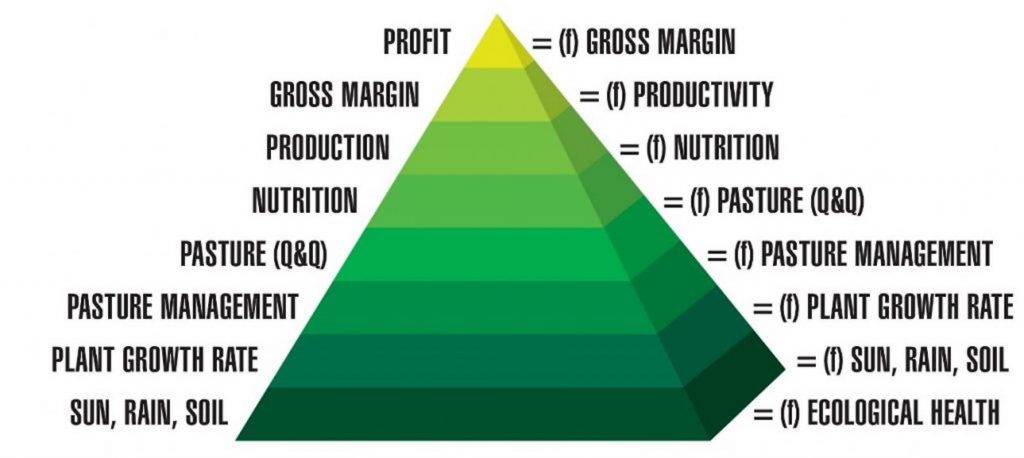
Grants can also contribute an additional income stream to assist with up front investment costs. Some of these include:
- Greening Australia stewardship payments
- NSW Government farm innovation fund (to ensure long term sustainability)
- Environmental trust project grants
- Conservation management program
- Emissions reduction fund (carbon sequestration) to earn Australian carbon credit units (ACCUs) and sell to generate additional income streams
- On-farm biodiversity package
- Agriculture biodiversity stewardship program
- Jeffery Hill Soil Health Awards
- The National Landcare program
It's not only Matt Doyle and family who are seeing greater financial returns since transitioning their farm to a regenerative focus. Greg Chappell from Shannon Vale Station says, "Costing comparisons aren’t all that easy due to the five year time lag, it is five years since we were following the high input regime. Suffice it to say that we are saving in the order of 30% of the high input regime program. This saving has been re-invested into further sub-division and water troughs to help with the rotational grazing."
Shane Joyce of Dukes Plain benefit the most financially through their reduced need of external inputs. "We have actually experienced a level of production which matches the production of the past, while having a reduced cost of production." While Tim Wright from Lana came to regenerative farming, like many others have, due to financial need. "It was a matter of terms of trade. We could not remain profitable and environmentally secure in what we were doing. We had no choice but to introduce radical change."
Matt's vision for Glenryan and other Australian graziers is to continue to restore the ecological function of the landscapes we manage, profitably. The farm is now managed based on holistic principles. Animals are run under a low input, rotational grazing system. They maintain ground cover year round and tread lightly on the landscape as their primary philosophy.
He says, "It is so much more than running a profitable business and producing food. It’s about the whole ecosystem. To enhance biodiversity, ecological function, natural capital, and our bank balances of these inventories, as well as our financial bank. Put simply, livestock are very much a part of the solution to climate change, not the problem."
"It is my hope that we all are making conscious decisions to play a part, no matter how big or small, in reversing some of the unintended consequences that have occurred as a result of the growth in the population and behaviour of our species. "
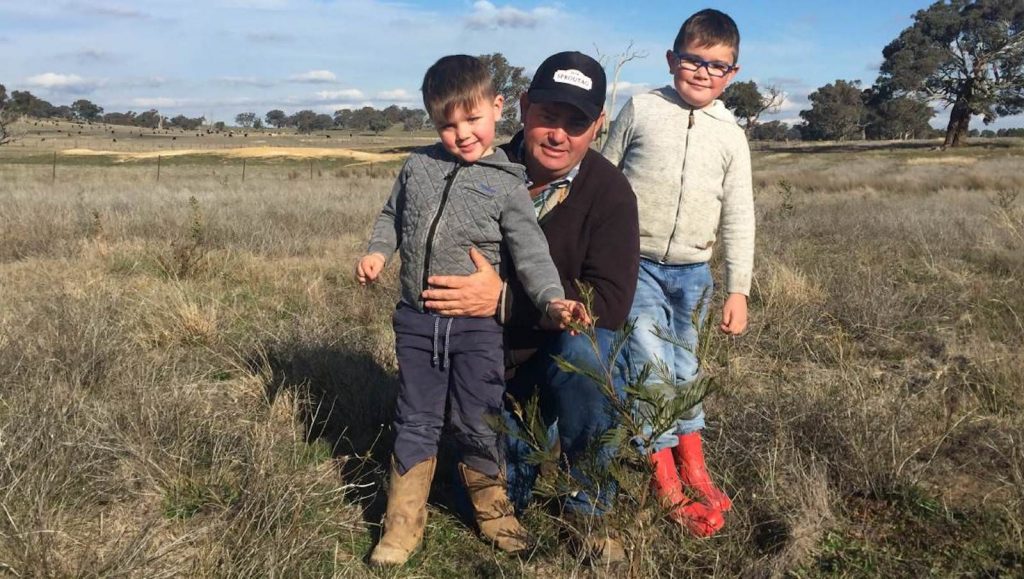
How to transition to a sustainable regenerative system
There are many different practices farmers can put into place to start transitioning their property right away. These include:
- Identify emissions sources
- Learn about carbon storage options
- Increase shade and shelter on property
- Increase biodiversity in both animals and plants
- Protect waterways and establish riparian shelters
- Consider energy efficiency improvements and increasing sources of renewables
- Switch feeds and supplement sources
- Evaluate rotational and time control grazing strategies
- Establish deep‐rooted pastures and legumes to improve soil carbon levels, soil health and lift animal productivity
- Use the grazing chart tool to proactively manage stock numbers and herd management practices, based on observations rather than averages.
You can sign up for MLA newsletter by contacting CN30@mla.com.au and check out the MLA website to find out more about the roadmap to carbon neutrality.
For a more in-depth education it's highly recommended to attend a short course by RCS or RegenAG to learn how to bring all these different techniques together into a property management plan, and worth reaching out to your local Landcare Group and Greening Australia to find out about upcoming events.
